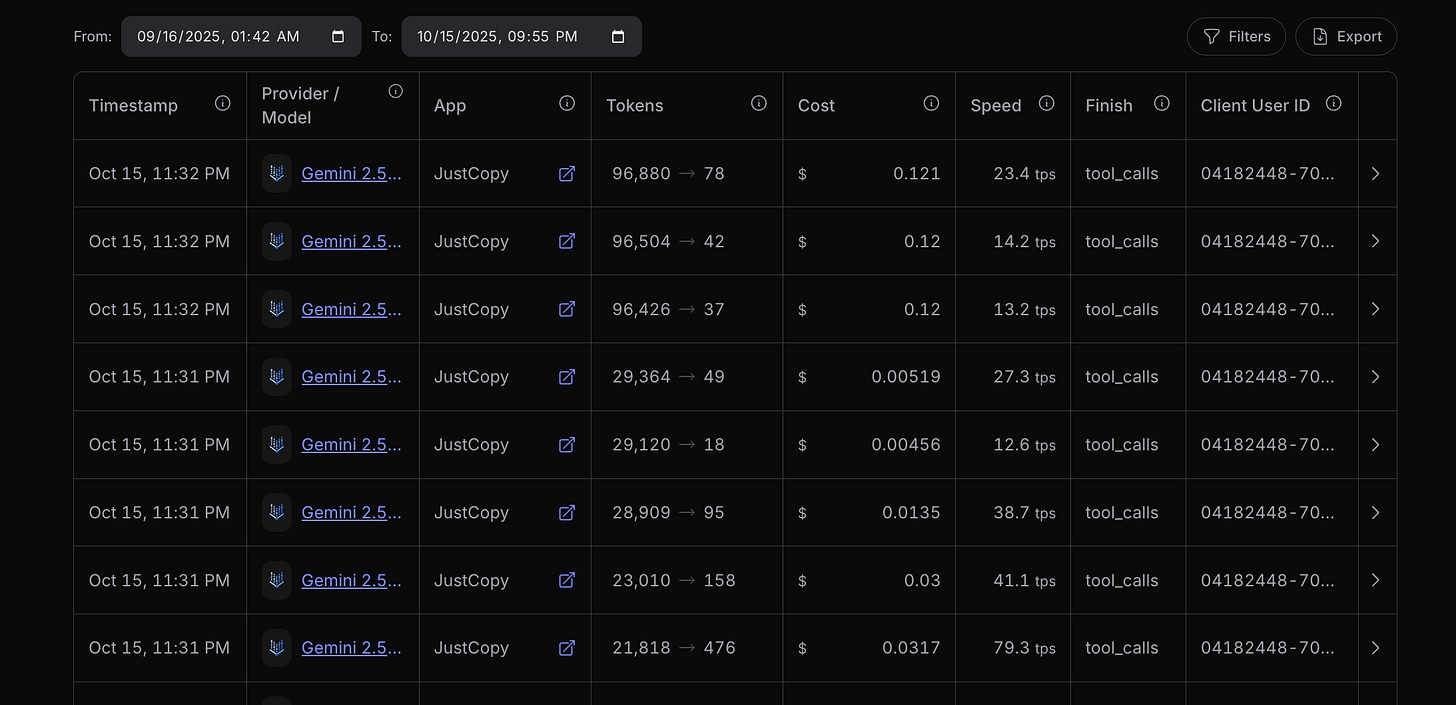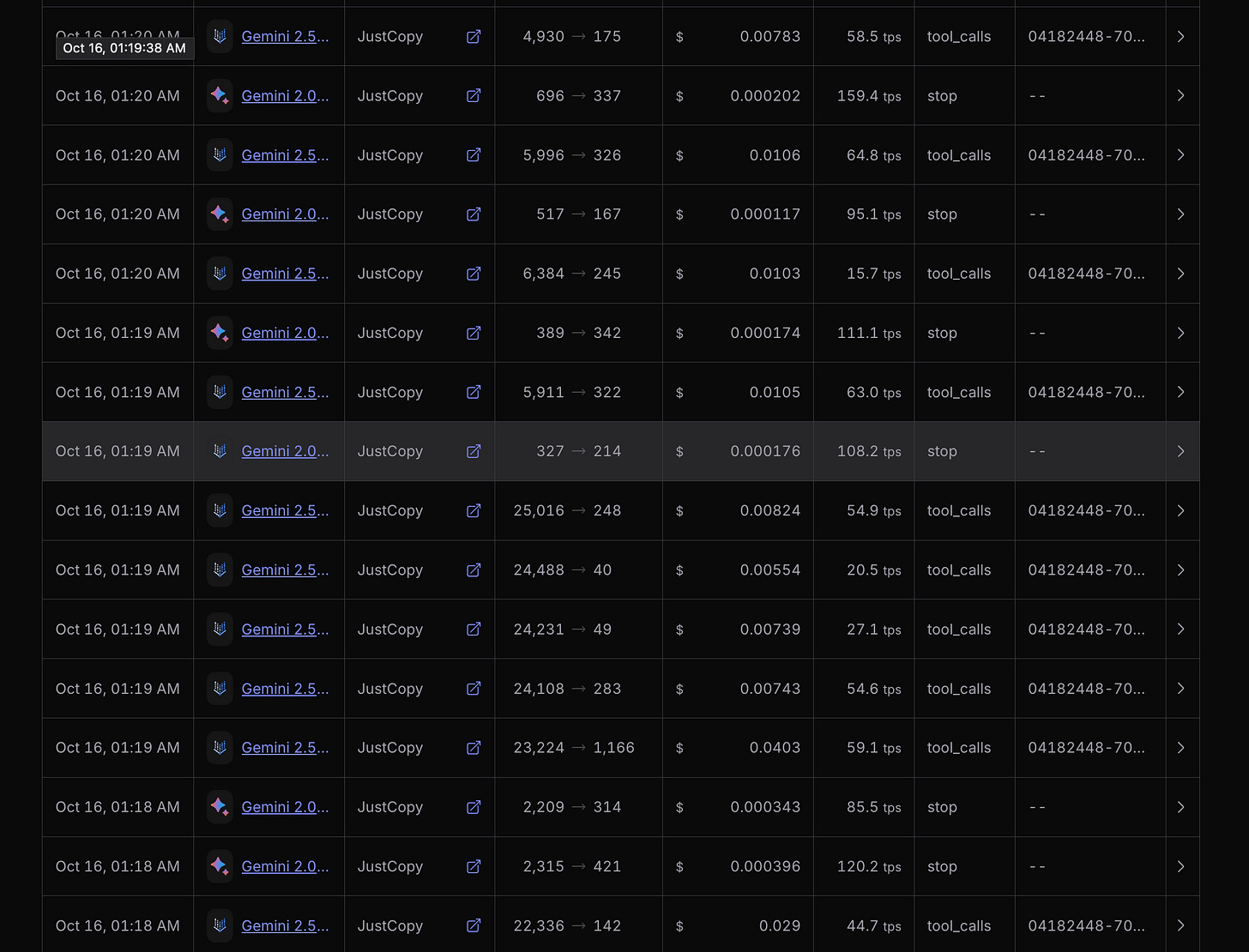How We Solved the Context Wall for Multi-Step AI Agents: A Production Journey
The Problem: When AI Agents Hit the Context Wall
We’re building multi-step AI agents at JustCopy.ai that autonomously complete complex software development tasks - the kind that require dozens of sequential steps. But we hit a major scaling challenge that many in this community probably face: token explosion.
Here’s what we observed in production:
- Step 1: 3 messages, 19K tokens
- Step 10: 23 messages, 45K tokens
- Step 20: 43 messages, 95K tokens
- Step 30: 63 messages, 150K tokens
Getting expensive fast! At $1.25 per million tokens, this adds up quickly. More critically, we were approaching context limits and latency was increasing with every step.
Why This Happens
Multi-step agentic workflows create exponential context growth. Each step adds multiple messages:
- User/system instructions
- Assistant tool calls
- Tool result messages
- Model responses
Traditional solutions like sliding windows lose critical context about early decisions. We needed something smarter.
Our Solution: Two-Layer AI-Powered Compression
We implemented an intelligent compression system with two layers:
Layer 1: Message-Level Compression
Instead of dropping old messages, we use AI to summarize them. Key insight: the last 15 messages contain the agent’s current working context. Everything before that can be compressed into a high-level summary that preserves key decisions, errors encountered, and project state.
Layer 2: Tool Result Compression
Large tool outputs (file reads, directory listings) are also summarized when they exceed size thresholds, with caching to avoid re-processing the same content.
The Results: Real Production Metrics
The transformation was dramatic:
Without Compression:
- Step 10: 45K tokens, $0.056 per step
- Step 20: 95K tokens, $0.119 per step
- Step 30: 150K tokens, $0.188 per step
Before
With AI Compression:
- Step 10: 28K tokens, $0.035 per step (-37% cost)
- Step 20: 30K tokens, $0.038 per step (-68% cost)
- Step 30: 31K tokens, $0.039 per step (-79% cost)
By step 30, we’re seeing 60-80% token reduction. For a 50-step agent workflow, that’s $4+ in savings per conversation.
After
Business Impact Beyond Cost Savings
This optimization directly supports our broader goals at JustCopy.ai - enabling autonomous development workflows that can scale globally. The cost efficiency allows us to offer more accessible AI-powered development tools, while the improved performance supports better SEO outcomes for generated projects and smoother deployment across different geographical regions.
Most importantly, agents that can maintain context across 50+ steps unlock entirely new use cases that weren’t feasible before due to context limits.
Key Implementation Insights
Use AI to compress context for AI - Models excel at summarization, and the summaries don’t need to be perfect, just good enough to maintain decision context.
Smart window sizing matters - We found 15 messages to be the sweet spot for preserving recent context while enabling significant compression.
Preserve what matters*- Always keep user messages, system definitions, and the most recent working context detailed.
Cost optimization - Using a cheaper model for compression costs pennies while saving dollars on the main model.
What We Learned
- Compression gets more effective as conversations grow longer
- Agent quality remained high - no accuracy loss observed
- Stage-aware filtering can reduce tokens further by only keeping relevant context
- Caching summaries eliminates redundant compression costs
- The approach scales beautifully for global deployment scenarios
The Bigger Picture
Context management isn’t just a technical challenge - it’s enabling the next generation of autonomous AI workflows. Whether you’re building development agents, content creation tools, or other multi-step systems, solving the context wall opens up entirely new possibilities.
What’s Next?
We’re exploring adaptive window sizing, semantic compression, and multi-tier caching. The key insight remains: use AI to intelligently manage AI context.




